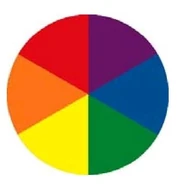Reference Book: Star Wars Saga Edition Web Enhancements (Customizing Star Wars Minis)
When choosing paint, different types of miniature and model paint are available, but make sure that you use acrylic paint. It dries quickly, cleans up easily, won't react with the plastic, and is easy to work with. Most miniature paint is formulated to work best on very small areas, but acrylic craft paint works just as well and is less expensive.
Acrylic paint is water based, so you can use water to make the paint thinner in consistency and to clean your brushes. You might want to protect your work area with newspaper and have paper towels handy in case of a spill. If you get paint on your clothes, be sure to rinse it out with water before it dries.
Before you start to paint, set up three small plastic bowls:
- Fill the first bowl with clean water. You'll use this bowl to wash your brushes so they don't carry paint from one color to the next. Change the water often, or it won't clean your brush.
- Fill the second bowl with clean water. You'll use this bowl to add water to the paint when you need to make it thinner.
- Don't add any water to the third bowl. You'll use this one for mixing paint.
You should have at least five different colors of paint: red, blue, yellow, black, and white. With these basic colors, you can mix almost any color you need. You also might want to have silver paint, which can be mixed with a little black and used on blasters and other weapons.
By using color wheels (see below), you can combine the above paints to create almost any color. The primary colors of red, blue, and yellow can be mixed together to create the complimentary colors of orange, purple, and green. By mixing equal amounts of a primary color and its adjacent complementary color, you will create a shade between the two, which is known as a tertiary color. By adding white, you can turn the color into a pastel shade. By adding black, you'll deepen the value of the color.
So how do you create other colors, such as brown? First, look at the color you want to make and figure out what color it is most like. For example, brown is close to orange, so start by mixing equal amounts of red and yellow to make orange. Then add a little yellow and very little black, and you'll end up with brown. You can make the brown lighter by adding more yellow or darker by adding more black.
When mixing paint, always mix in small amounts and use only a few drops of each color at a time. It takes less paint to darken a color than to lighten one, so always start with the lightest color first (such as white or yellow) and add darker colors (such as black or blue) to it.
Pay attention to the amount of paint you use when mixing. Acrylic paint dries quickly, and if you mix too much, you'll waste paint. It's better to mix too little and then mix more paint as you need it. If you plan on using a large amount of a certain color, mix a large batch in an old paint container or simply buy that color.
Follow these steps to mix paint:
- Dip your brush in clean water.
- Put a few drops of the lightest color in the mixing dish.
- Put a few drops of the next darkest color in the mixing dish. Place the drops next to the first color, but don't mix them yet.
- Repeat steps 3 and 4 with each color you want to use. When you have them all in the mixing dish, mix the paint together. Once you see what it looks like, you might have to add more of a certain color to achieve the desired shade.
If you're having trouble getting the color you want, take some drops of the mix you've created and add other colors a little at a time. Don't be frustrated if you can't seem to get the exact color you want right away. A bit of practice (and some trial and error) will help you learn to make the colors you want more quickly. You can also follow the simple guidelines below.
Color Wheels[]
By using color wheels, you can combine the above paints to create almost any color. The primary colors of red, blue, and yellow can be mixed together to create the complimentary colors of orange, purple, and green. By mixing equal amounts of a primary color and its adjacent complementary color, you will create a shade between the two, which is known as a tertiary color. By adding white, you can turn the color into a pastel shade. By adding black, you'll deepen the value of the color.

Black: use black by itself; no mixing
White: use white by itself; no mixing
Gray: mix black and white
Primary Colors
Red: use red by itself; no mixing
Blue: use blue by itself; no mixing
Yellow: use yellow by itself; no mixing

Purple: mix red and blue
Orange: mix red and yellow
Green: mix blue and yellow
Tertiary Colors
Dark purple: mix purple and blue
Aqua blue: mix green and blue
Lime green: mix green and yellow
Golden yellow: mix orange and yellow
Fiery orange: mix orange and red
Cedar red: mix purple and red

Add white to the above mixes

Darker Colors
Add a little black to the above mixes